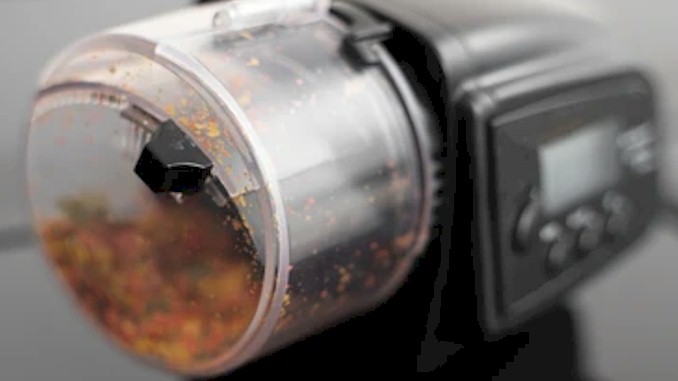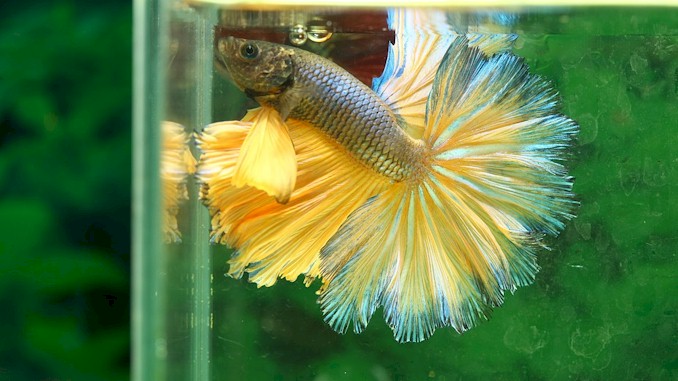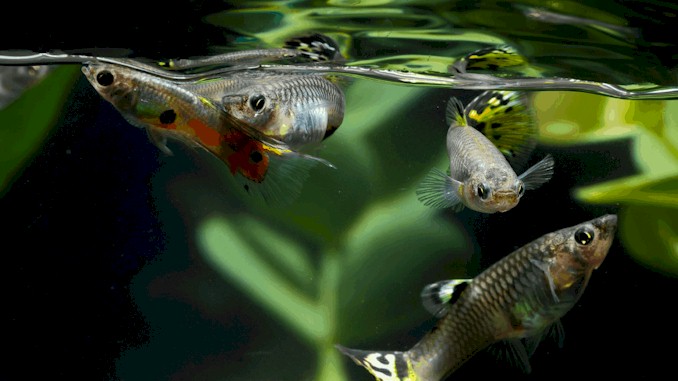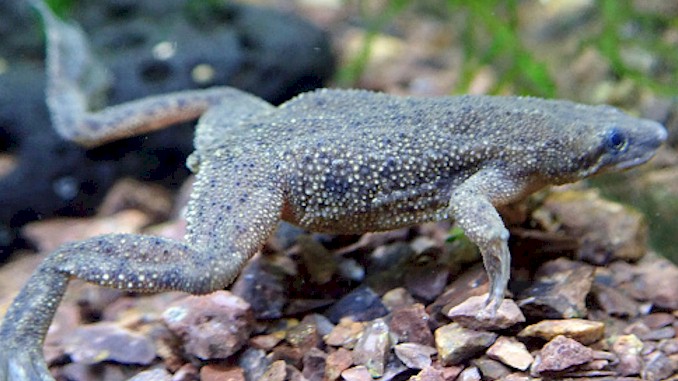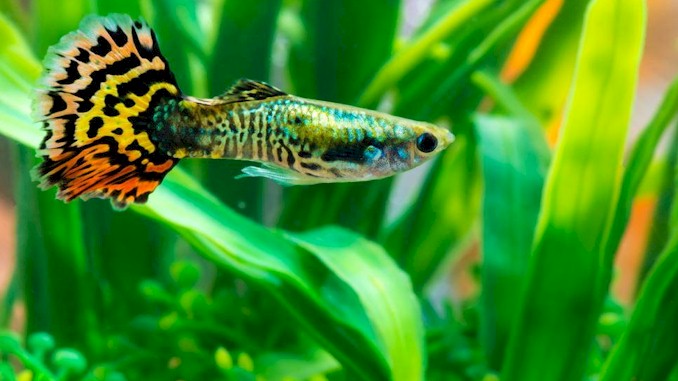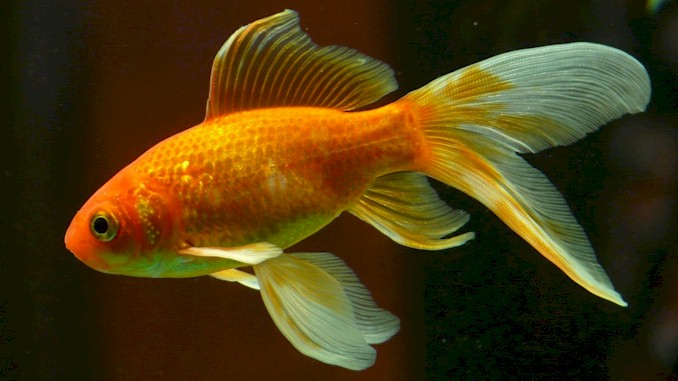Guppy Tank Population: Gallon by Gallon Guide
I can still recall the time when I decided to raise some guppies in my home. The first thing that popped into my mind was the appropriate tank size that I should purchase. So, I sat in front of my laptop and began scouring Google for information. I stumbled upon a ratio that seemed suitable, calculated it, and eventually decided on the size of the tank that I would purchase. Years have passed since then, and with the benefit of hindsight, I realized that if I had spent more time studying and consulting with an experienced guppy owner, I could have made a more informed decision. As a result, I won’t end up with multiple tanks in my home. That’s why I’m writing this post. I don’t want you, as a newcomer, to go through the same experience I did. This way, you’ll be able to avoid unnecessary expenses and hassle.
The general rule of thumb is to keep one guppy per gallon of water. However, this is only a rough estimate and should be adjusted based on the size of the tank and the filtration system in use. Overcrowding can lead to health issues, so it is essential to consider all factors before adding more guppies to your aquarium.
But there’s more to the story than just the rule of one guppy per gallon. There are several other factors that you need to consider, such as the gender ratio, the age of the guppies, and the type of filtration system in use. By the end of this post, you will have a clear understanding of the ideal number of guppies you can keep per gallon of water, as well as the factors that determine it. So, if you want to ensure the health and well-being of your guppies, keep reading for more valuable information on this topic.
Factors to Consider When Determining Guppy Population Density
Determining the ideal number of guppies you can keep per gallon of water is not as straightforward as it may seem. There are several factors that you need to consider before adding more guppies to your aquarium. Some of the critical factors that impact guppy population density include the size of the tank, the type of filtration system, the age and health of the guppies, and their gender.
One of the most crucial factors to consider when determining guppy population density is the size of the tank. Generally, it is recommended to keep one guppy per gallon of water. However, this is just a rough estimate and should be adjusted based on the size of the tank. For instance, if you have a larger tank with ample filtration, you may be able to keep more guppies than in a smaller tank with a limited filtration system.
Another factor that impacts guppy population density is the type of filtration system in use. A high-quality filtration system is essential for maintaining the water quality and reducing the ammonia levels in the tank. It is important to choose the right filtration system for your tank based on its size and the number of guppies you plan to keep.
In addition to the tank size and filtration system, the age and health of the guppies also play a crucial role in determining the population density. Older guppies are generally more susceptible to disease and require more space, while younger guppies may be able to tolerate more crowding. It is also essential to ensure that your guppies are healthy and disease-free before adding more to the tank.
Lastly, the gender of the guppies also impacts the population density. Male guppies are generally more active and territorial than females, so it is important to maintain the right gender ratio in the tank. As a general rule, it is recommended to keep a ratio of one male to two or three females to prevent aggression and promote a healthy social environment.
In conclusion, determining the ideal number of guppies you can keep per gallon of water requires careful consideration of various factors such as tank size, filtration system, guppy age and health, and gender ratio. By keeping these factors in mind, you can ensure that your guppies thrive and enjoy a healthy and comfortable living environment.
Understanding the Ideal Gender Ratio for Your Guppy Tank
Maintaining the right gender ratio is essential for promoting a healthy and harmonious environment in your guppy tank. Male and female guppies have different social and behavioral needs, and overcrowding or imbalanced gender ratios can lead to aggression and stress. Therefore, it is important to understand the ideal gender ratio for your guppy tank and ensure that you maintain it.
The general rule of thumb is to maintain a ratio of one male guppy to two or three female guppies. This is because male guppies are more active and aggressive, and having too many males in the tank can lead to increased territorial behavior and aggression. On the other hand, female guppies are more social and tend to form groups, making them more compatible with each other.
However, it is important to note that the ideal gender ratio may vary based on the size of your tank and the filtration system in use. For instance, if you have a larger tank with ample filtration, you may be able to keep more males in the tank without risking overcrowding or aggression. Similarly, if you have a smaller tank or a less efficient filtration system, you may need to keep a lower male-to-female ratio to maintain a healthy and comfortable environment.
Another factor to consider when determining the ideal gender ratio for your guppy tank is the type of guppy strain you have. Some guppy strains, such as the Endler’s guppy, are more tolerant of overcrowding and may be able to tolerate a higher male-to-female ratio. Conversely, other strains, such as the Japanese Blue guppy, may require a lower male-to-female ratio to prevent aggression and stress.
In addition to the ideal gender ratio, it is also essential to consider the age and health of your guppies when determining population density. Older male guppies are generally more aggressive and territorial than younger ones, and may require more space to avoid stress and aggression. Similarly, if you have sick or weak guppies in the tank, you may need to reduce the overall population density to prevent overcrowding and further stress.
In conclusion, maintaining the right gender ratio is essential for promoting a healthy and harmonious environment in your guppy tank. The ideal gender ratio may vary based on the size of your tank, the filtration system in use, and the type of guppy strain you have. By understanding these factors and keeping them in mind, you can ensure that your guppies thrive and enjoy a healthy and comfortable living environment.
How Age Impacts Guppy Population Density and Health
Age is an important factor to consider when determining the population density of guppies in your tank. As guppies age, they become more susceptible to illness and disease, and may require more space to avoid stress and aggression.
Generally, younger guppies are more active and playful than older ones, and may require more space to swim and explore. Therefore, if you have a tank with a mix of younger and older guppies, you may need to provide more space to accommodate the needs of both age groups.
In addition, older male guppies may become more aggressive and territorial than younger ones, and may require more space to avoid conflict and stress. Similarly, older female guppies may be more prone to stress and illness, and may require a lower population density to avoid overcrowding and promote optimal health.
It is also important to note that the lifespan of guppies varies depending on factors such as strain, genetics, and environmental conditions. Some guppies may live up to three years or more, while others may have a shorter lifespan of one to two years.
As guppies age, they may also experience a decline in their reproductive capacity, which can impact the overall population density of your tank. Therefore, if you are breeding guppies, it is important to monitor the age and health of your breeding stock and adjust the population density accordingly to maintain optimal health and productivity.
In conclusion, age is an important factor to consider when determining the population density of guppies in your tank. Older guppies may require more space to avoid stress and aggression, while younger guppies may need more room to swim and explore. By understanding how age impacts guppy health and behavior, you can create a comfortable and healthy living environment for your fish.
Types of Filtration Systems: Which One is Right for Your Guppy Tank
Filtration is a crucial aspect of maintaining a healthy and balanced ecosystem in your guppy tank. There are several types of filtration systems available, each with its own benefits and drawbacks. Here, we will explore the most common types of filtration systems and help you determine which one is right for your guppy tank.
- Mechanical Filtration: This type of filtration removes physical debris and waste from the water. It typically involves a filter pad or sponge that traps particles as the water passes through. Mechanical filtration is essential for maintaining clean water and preventing the buildup of harmful bacteria.
- Biological Filtration: This type of filtration relies on beneficial bacteria to break down organic waste and convert harmful toxins such as ammonia and nitrites into less harmful nitrates. Biological filtration is essential for maintaining a healthy and balanced ecosystem in your tank.
- Chemical Filtration: This type of filtration uses activated carbon or other chemical media to remove impurities and toxins from the water. Chemical filtration is often used in conjunction with mechanical and biological filtration to maintain optimal water quality.
- UV Sterilization: UV sterilization uses ultraviolet light to kill harmful bacteria, viruses, and other microorganisms in the water. It is often used as an additional step in the filtration process to ensure optimal water quality.
When selecting a filtration system for your guppy tank, it is important to consider the size of your tank, the number of guppies, and your budget. Mechanical and biological filtration are the most essential types of filtration and should be included in any filtration system. Chemical filtration and UV sterilization are optional but can be useful in maintaining optimal water quality.
In addition to selecting the right type of filtration system, it is important to properly maintain and clean your filters to ensure optimal performance. This includes regularly changing filter media and cleaning filter components such as sponges and impellers.
In conclusion, selecting the right type of filtration system is essential for maintaining a healthy and balanced ecosystem in your guppy tank. By understanding the different types of filtration systems available and considering your specific needs and budget, you can select a filtration system that will provide optimal water quality and ensure the health and wellbeing of your guppies.
Signs of Overcrowding in Your Guppy Tank and What to Do About It
Overcrowding in your guppy tank can lead to a variety of problems, including poor water quality, increased stress levels for your fish, and a higher risk of disease. Here are some signs that your tank may be overcrowded:
- Algae Growth: If you notice excessive algae growth in your tank, it may be a sign that your tank is overcrowded. This is because excess waste and nutrients in the water can contribute to algae growth.
- Aggressive Behavior: Overcrowding can lead to increased stress levels for your fish, which may lead to aggressive behavior. This can result in fighting, nipping, and other forms of aggression.
- Poor Water Quality: Overcrowding can lead to poor water quality, which can result in a range of health problems for your fish, including fin rot, fungal infections, and other diseases.
- Reduced Swimming Space: As your tank becomes more crowded, your fish will have less space to swim and move around. This can lead to stress and reduced activity levels.
If you notice any of these signs of overcrowding in your guppy tank, it is important to take action to address the problem. Here are some steps you can take:
- Monitor Fish Behavior: Keep an eye on your fish to see if they are exhibiting any signs of stress or aggression. If you notice any unusual behavior, it may be a sign that your tank is overcrowded.
- Reduce Stocking Levels: If you determine that your tank is overcrowded, you may need to reduce the number of fish in your tank. This can be done by removing some of the fish or moving them to a larger tank.
- Increase Tank Size: If you are unable to reduce the number of fish in your tank, you may need to consider upgrading to a larger tank to provide more swimming space and better water quality.
- Improve Filtration: Increasing the efficiency of your filtration system can help to reduce waste and maintain optimal water quality.
In conclusion, overcrowding can be a serious problem in your guppy tank, leading to poor water quality and increased stress levels for your fish. By monitoring your fish behavior and taking action to address any signs of overcrowding, you can help ensure the health and wellbeing of your guppies.


